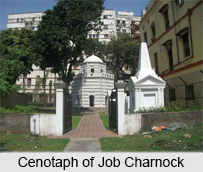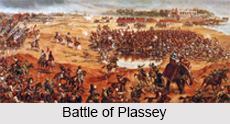 Job Charnock was an administrator of the British East India Company in India. He was traditionally regarded as the founder of Kolkata, the Capital of India in the early phase of the rule of British India.
Job Charnock was an administrator of the British East India Company in India. He was traditionally regarded as the founder of Kolkata, the Capital of India in the early phase of the rule of British India.
Life of Job Charnock
Job Charnock came from a Lancashire family and was the second son of Richard Charnock of London. Stephen Charnock was probably his elder brother.
Works of Job Charnock
Job Charnock was entrusted with the duty of procuring the Company`s saltpetre and appointed to the centre of the trade, Patna in Bihar, on 2nd February 1659. After four years at the factory he contemplated returning to England, but the court of directors in London were keen to retain his services, and won him over by promoting him to the position of chief factor in 1664. Job Charnock was promoted to the rank of senior merchant by 1666, and became third in the Bengal hierarchy in 1676.
Job Charnock in Bengal
On 28th August 1685, Job Charnock finally assumed the position of agent and chief in the Bay of Bengal. By this time a crisis had arisen over restrictions on trade, and in particular the Mughal nawab`s imposition of a customs duty of 3.5 per cent, which the English refused to pay on the grounds that it was in breach of the original firman which exempted them from customs. The relations with the Nawab deteriorated into violent conflict.
Job Charnock and Sutanati
It was probably during this interlude at Sutanuti that Job Charnock suffered an irreparable personal loss in the death of his wife Maria. They had been together for some twenty-five years. They had one son, and three surviving daughters who were later baptised in Madras.
Death of Job Charnock
Job Charnock died in Calcutta on 10th January 1692 and shortly after the death of his son. He had three surviving daughters all remained in Kolkata- Mary, Elizabeth, and Katherine.
Cenotaph of Job Charnock
The mausoleum of Job Charnock was erected in 1695 over the simple grave by Eyre, his son-in-law and successor. It can still be seen in the graveyard of St. John`s Church, the second oldest Protestant church in Calcutta after John Zacharias Kiernander`s Old Mission Church (1770), and is now regarded as a national monument. His tomb is made from a kind of rock named after him as Charnockite.
Related Articles
Kolkata
West Bengal, Indian State
Tourism in Kolkata
History of Kolkata



















